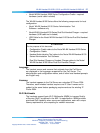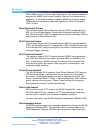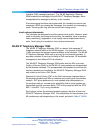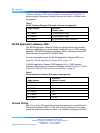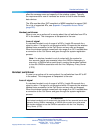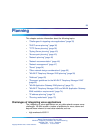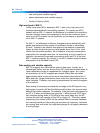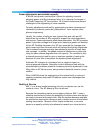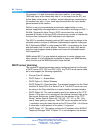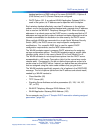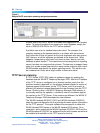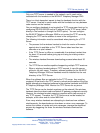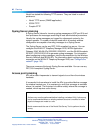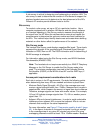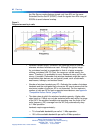
Challenges of integrating voice applications 35
Power adjustments and variable capacity
A WLAN has dynamic mechanisms in place for adjusting channels,
adjusting power, and filling coverage holes, all in response to changes in
the Radio Frequency (RF) environment. All of these mechanisms present
challenges to the engineering of voice networks.
Dynamic adjustments work well for guaranteeing minimum coverage and
connectivity of devices, particularly data devices. Voice requires more
planned engineering.
Usually, the number of calls per area (square foot) and calls per AP
determines the number of APs required to support the voice applications
and devices. Power adjustments affect these parameters. If an AP increases
power, it provides coverage for a larger area, meaning a greater call demand
for the AP. Doubling the power of an AP can quadruple its coverage area,
which means up to four times as much call demand as originally engineered.
That increased coverage area also has substantial portions of lower data
rate coverage. In addition, the added cochannel interference to other cells
using the same channel degrades their call capacity. The net effect is that
a network previously tuned for voice is now less capable of meeting the
demands of voice than it was before the dynamic power adjustment.
Automatic RF changes do not always have a negative impact on
voice-engineered networks. Admission control techniques help with the
oversubscription problems related to increasing cell sizes dynamically. Hole
filling, after an AP failure occurs, also provides substantial value to a voice
solution.
When VoWLAN drives the engineering of the network both in scale and
capacity, sometimes automatic RF features create more challenges than
they resolve.
Quality of Service
802.11 is a shared media technology, but only one device can use the
media at a time. The AP abides by this rule as well.
Because the transmitting device cannot detect collisions, 802.11 uses a
statistical mechanism to reduce the possibility of collisions when two devices
are ready to transmit at the same time. After the medium becomes available,
the mechanism requires the devices to wait a random amount of time before
starting transmission. Because of this simple mechanism, a nonvoice
device is as equally as likely to be allowed to transmit as a voice device is.
Nortel Communication Server 1000
WLAN IP Telephony Installation and Commissioning
NN43001-504 01.02 Standard
Release 5.0 15 June 2007
Copyright © 2004-2007, Nortel Networks
.



